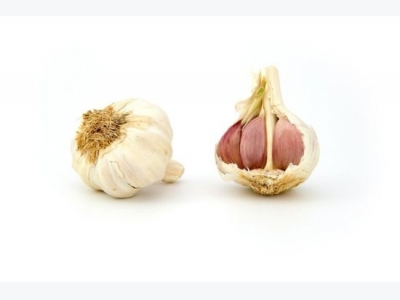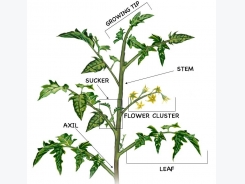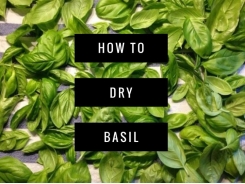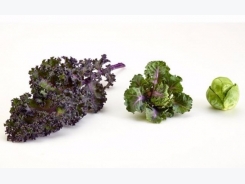Organic Pest and Disease Control

Not that long ago using poisonous chemicals (pesticides and herbicides) to get rid of garden pests and unwanted weeds was the accepted practice for both home gardens and commercial farms.
But ongoing research has revealed that these toxic substances are linked to many diseases and health problems, in humans and in animals. These range from cancer and lymphoma to infertility and birth defects.
You don’t have to swallow these chemicals to be affected. You don’t even have to touch them. You may simply breathe in the fine spray that contains some of the poison, or eat something that has been treated with a herbicide. They also harm the soil and the water in the soil, which often leaches into our gardens or even our water supply. And just when you think the dust has settled, the poison in the ground is busy releasing some of its toxins into the air that you breathe.
For this reason, a growing number of people are turning to organic methods of gardening which, perhaps ironically, utilize knowledge and techniques gathered over many hundreds of years. Organic gardening demands a holistic approach, which is sustainable, while the chemical strategies are designed for immediate effect.
So while organic gardening relies heavily on integrated pest management – which involves a thorough ecological approach, and eliminating the use of pesticides – it goes much further than this.
Advantages of gardening using organic practices
There are many advantages of gardening organically. First of all it is a much healthier route to take when controlling weeds and garden pests and diseases. It’s healthier for you and healthier for the environment. Ironically, it can also be less expensive than using chemicals. There are more and more organic products on the market today and you can make your own using proven ingredients that won’t harm you or the environment.
Using organic gardening practices enables plants to set up what is similar to their own immune systems, especially if you choose indigenous species and those that are reasonably pest-resistant. This is because organic gardening relies on the fact that all organisms in nature are interdependent. If you have a healthy ecosystem, you will have healthy plants.
Companion planting, which involves positioning and growing certain plants alongside one another, sets up a natural support system in the garden. Some plants will even deter insects and thus help you to control these pests. This is especially useful in the kitchen garden where a single crop could be wiped out by a major insect infestation.
While it may be a little more back breaking, tilling your garden by hand and pulling out the weeds by the roots is a much more effective long-term method of weed control than spraying with herbicides.
Organic gardening tips
When pests appear, take immediate action. Infestations of leaf-eating insects are reasonably easy to identify, especially caterpillars and beetles. You can gather these by hand and then either tread on them (yuk) or drown them in water-detergent mixture. Otherwise use an organic spray or make your own adding garlic or chili to make it effective.
To make a garlic spray, chop about 4 oz. garlic and soak in three tablespoons of liquid paraffin for two days. Add two cups of hot water and add an ounce of grated soap (not detergent) or pure soap flakes. Mix thoroughly and then leave to cool before straining. To use, dilute about three teaspoons of the mixture in four cups of water and then spray.
To make a chili spray, blend six fresh hot chilies with two cups of hot water. Add half a cup of pure soap flakes. Mix, cool and then strain. Dilute about four teaspoons in four cups of water to spray. If you spot ant trails, dribble the mixture neat along the trail.
Both these sprays are great for getting rid of sap-sucking insects including aphids and thrips as well as white fly and stink bugs.
If your plants get fungal diseases, mildew or rust, make up a spray with half an ounce of bicarbonate of soda, 1.5 oz. soap flakes and four cups of hot water. Cool, strain and then spray. Alternatively mix milk and water together in the ratio 1:2 and use this as a spray.
Encourage beneficial insects, like ladybugs, honey bees and ground beetles, to visit your garden. Bring them in if necessary (many are available commercially at the time of year they are needed).
Keep your soil healthy and fertile by mulching and by adding compost. Reduce your kitchen and garden waste by making your own compost. Just remember not to add meat or fish as this will attract flies.
Practice crop rotation (with plants that require different nutrients) so that soil-living pests and diseases that favor one particular plant don’t build up in one spot in the garden.
Finally, keep your own gardening journal and make a note of every pest you spot. If you don’t know what it is, do some research to find out what they are. Note when the pest became an unwanted visitor to your garden (date and time of day), and what you did to get rid of it.
Có thể bạn quan tâm
Phần mềm

Phối trộn thức ăn chăn nuôi

Pha dung dịch thủy canh

Định mức cho tôm ăn

Phối trộn phân bón NPK

Xác định tỷ lệ tôm sống

Chuyển đổi đơn vị phân bón

Xác định công suất sục khí

Chuyển đổi đơn vị tôm

Tính diện tích nhà kính

Tính thể tích ao hồ




 Lawn Mowing
Lawn Mowing  How to Grow Kalettes: New Superfood, the Kale…
How to Grow Kalettes: New Superfood, the Kale…